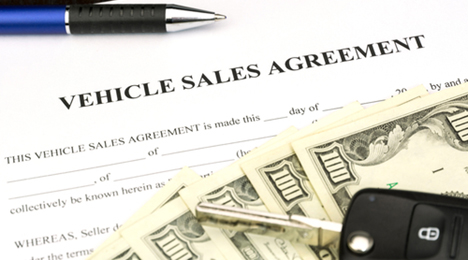Despite Delinquency Rise, Subprime Auto Bubble Dismissed

The latest delinquency data from Experian Automotive might give more fuel to observers who believe subprime auto financing is creating a bubble similar to the one that popped in the mortgage industry and sent the economy into a tailspin more than five years ago.
However, an Ivy League economic expert refuted the parallel between auto loans and mortgages, rather pointing to the potential turbulence associated with financing growth that the chairman of the Federal Reserve also mentioned this week in comments ahead of the Federal Open Market Committee’s annual gathering.
First, here are the latest delinquency numbers from Experian.
According to its latest State of the Automotive Finance Market report, Experian indicated 60-day loan delinquencies increased by 7 percent to 0.62 percent in the second quarter of this year from 0.58 percent during the same quarter a year ago. Despite the rise, Experian pointed out the rate still is near historic lows.
Additionally, 30-day delinquencies showed a slight increase, going from 2.38 percent to 2.39 percent over the same time period. Moreover, Experian determined the total balance of loans that are 60-days delinquent has increased by $859 million since Q2 2013, while the balance of 30-day delinquent loans has increased by $2.8 billion from a year earlier.
“The rosy glow of perfect payment performance in the automotive space is beginning to tarnish,” said Melinda Zabritski, senior director of automotive finance for Experian Automotive who will kick off the SubPrime Forum with the opening keynote presentation on Nov. 11.
“We’re starting to see a slight uptick in the number of consumers struggling to make their automotive payments on time,” Zabritski continued. “However, we have to keep in mind that these percentages are still extremely low. We’ll want to keep an eye on how consumers pay their bills in the coming months, as it may dictate the availability of credit in the future.”
Experian also shared two other negative trends from its Q2 data, including:
• The overall automotive repossession rate saw a significant increase in the second quarter of 2014, jumping more than 70 percent to 0.62 percent from a year earlier.
• The average charge-off amount in Q2 was $8,149, up $932 from the previous year.
Trends like those points have fueled multiple industry commentaries about how subprime auto financing is heading down the same path of mortgages. But Jack Guttentag, professor of finance emeritus at the Wharton School of the University of Pennsylvania, dedicated an entire commentary on his website, The Mortgage Professor, to echo similar stances that finance company executives also shared in this previous report from SubPrime Auto Finance News.
“The role of collateral is very different in the market for subprime loans on used cars than in the home-loan market,” Guttentag said. “It is common for the car purchaser to owe more than the car is worth, but that does not weaken the incentive to pay because the borrower needs the car. The importance of the collateral to the lender is mainly the power to take the car away from the borrower, and only secondarily is it viewed as the means to recover some of the unpaid balance of a loan in default.
“We worry about bubbles because of the implied vulnerability to a shock, but none of the parallels to the subprime mortgage market indicate that the subprime auto market is in a bubble,” he continued. “The type of shock to which this sector is exposed is not the bursting of a bubble, but a major rise in unemployment that cuts the incomes of borrowers. At this point, no such shocks are on the horizon.”
While Guttentag doesn’t expect unemployment to spike like it did five years ago when the recession gained negative momentum. Federal Reserve chairman Janet Yellen explained how much time and growth it has taken for the labor market to recuperate. She shared the latest data in prepared remarks as Fed leaders gathered for their special annual meeting in Jackson Hole, Wyo.
Yellen noted job gains in 2014 have averaged 230,000 a month, up from the 190,000 jobs monthly during the previous two years. She also mentioned the unemployment rate, at 6.2 percent in July, has declined nearly 4 percentage points from its late 2009 peak.
“In the five years since the end of the Great Recession, the economy has made considerable progress in recovering from the largest and most sustained loss of employment in the United States since the Great Depression,” Yellen said. “More jobs have now been created in the recovery than were lost in the downturn, with payroll employment in May of this year finally exceeding the previous peak in January 2008.
“Over the past year, the unemployment rate has fallen considerably, and at a surprisingly rapid pace. These developments are encouraging, but it speaks to the depth of the damage that, five years after the end of the recession, the labor market has yet to fully recover,” she went on to say.

 View The Latest Edition
View The Latest Edition

